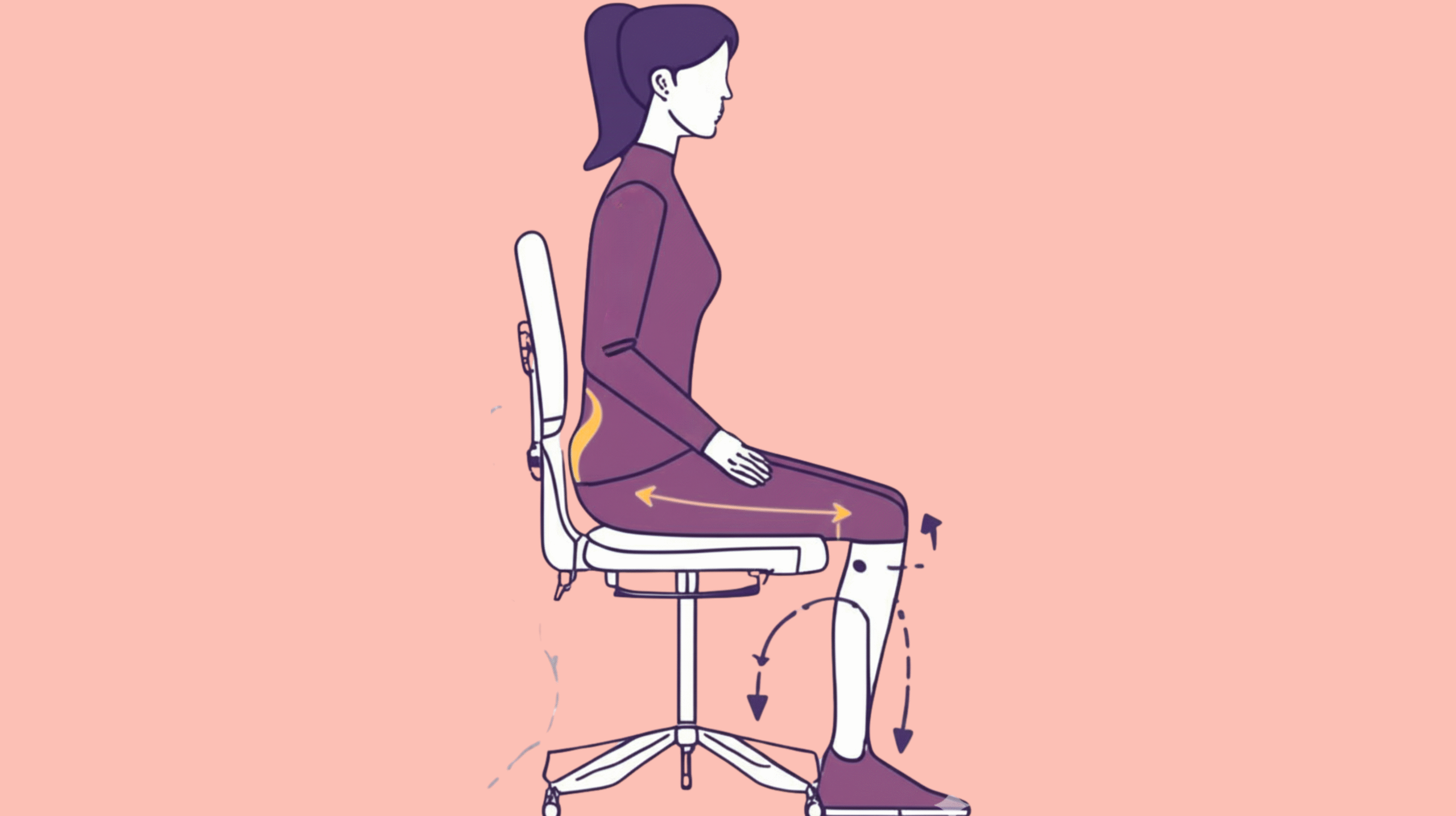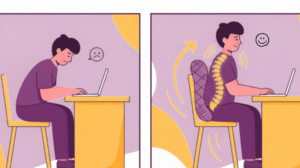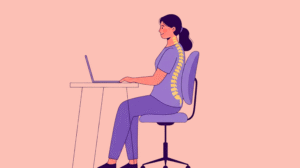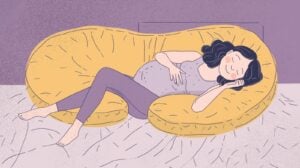Coccyx pain, which is also called tailbone pain or coccydynia occurs due to postural issues, especially to those who are involved in tasks that require prolonged sitting. The coccyx is a small bone, triangular in shape which is located at the spine base. When excess pressure is put on the coccyx or when it is injured slightly, it can cause pain. Poor sitting posture, prolonged labour, pregnancy, injury and people who undergo operations are all the probable causes of this pain. The treatment of tailbone pain is crucial to maintaining the functionality, comfort and health of your spine in your daily life.
A coccyx cushion is a very effective means to control coccyx pain. Such cushions will help reduce the pressure on the tailbone, promote good posture in the spine and general sitting comfort. It does not only reduce pain, but also enhances good sitting habits, accelerates healing, and prevents additional damage. The ergonomic structure of the cushion, its combination with other aids, and proper sitting can significantly improve your spinal health and pain management.
Understanding Coccyx Cushions
What is a Coccyx Cushion?
A coccyx cushion is a specially designed seat cushion that reduces pressure on the tailbone by redistributing weight across the buttocks and thighs. Its purpose is to relieve pain in the lower spine and coccyx area, often caused by prolonged sitting or injury. Unlike regular cushions, coccyx cushions have an ergonomic shape that supports proper posture and encourages natural spinal alignment [1].
Coccyx cushions are widely used in various settings, from office chairs and car seats to dining chairs and recliners. They are recommended for individuals experiencing tailbone pain, recovering from surgery, or pregnant women who need additional support while sitting.
Types of Coccyx Cushions
Coccyx cushions come in various materials and designs to accommodate different needs:
- Foam Cushions: Lightweight, affordable, and moderately firm. Suitable for short-term use but may compress over time.
- Memory Foam Cushions: Contour to the body, providing personalized support and excellent pressure relief. Highly recommended for long sitting hours.
- Gel Cushions: Incorporate a gel layer to reduce pressure points, offer cooling comfort, and minimize discomfort from prolonged sitting.
- Inflatable Cushions: Adjustable firmness and portable; ideal for travel or users who need customizable support.
Each type offers specific benefits, and choosing the right cushion depends on individual comfort preferences, duration of use, and spinal support requirements.
Ergonomic Design and U-Shaped Cutout Explained
Most coccyx cushions feature a U-shaped or wedge-shaped cutout at the back of the cushion. This design is intentional:
- Reduces Tailbone Pressure: The cutout ensures that the coccyx does not touch the seat surface, significantly reducing discomfort.
- Promotes Proper Spinal Alignment: By relieving pressure, the cushion encourages a natural curve in the lower spine, improving posture and reducing strain on surrounding muscles [2].
- Enhances Blood Circulation: Proper weight distribution prevents numbness and reduces fatigue during prolonged sitting.
Ergonomic designs vary, but all aim to combine comfort, support, and spinal health benefits for long-term use.
Why Sitting Position Matters for Tailbone Pain?
Understanding the relationship between sitting posture and coccyx pain is essential for effective relief.
Anatomy of the Coccyx and Lower Spine
The coccyx is a small, triangular bone at the base of the vertebral column, consisting of three to five fused vertebrae. It serves as an attachment point for ligaments, muscles, and tendons that support pelvic floor and lower back function [3]. Improper sitting posture can apply direct pressure on the coccyx, strain ligaments, and lead to inflammation, pain, or discomfort that worsens over time.
How Poor Sitting Posture Increases Tailbone Pressure?
Common postural issues contribute to coccyx pain:
- Slouching or Rounded Back: Shifts weight toward the tailbone, compressing the coccyx and straining surrounding muscles.
- Leaning to One Side: Creates uneven pressure on the pelvic bones and can exacerbate pain.
- Sitting on Hard Surfaces: Lack of cushioning leads to direct pressure, causing inflammation and discomfort.
- Crossed Legs or Sitting Forward: Alters natural alignment and increases coccyx stress.
Recognizing and correcting these habits is essential for pain management and spinal health.
Benefits of Proper Alignment Using Cushions
Using a coccyx cushion encourages proper posture and reduces discomfort:
- Pain Relief: Alleviates pressure on the tailbone and surrounding ligaments.
- Improved Posture: Supports natural spinal curvature and encourages ergonomic alignment.
- Enhanced Comfort: Reduces fatigue and discomfort during long sitting periods [4].
- Support for Recovery: Beneficial for post-surgical patients, pregnant women, or individuals with chronic coccyx issues.
When combined with ergonomic chairs, stretching, and regular breaks, coccyx cushions can significantly improve sitting comfort and long-term spinal health.
Step-by-Step Guide: How to Sit on a Coccyx Cushion?
Using a coccyx cushion correctly maximizes its effectiveness in relieving tailbone pain and supporting spinal health. Improper use can reduce benefits and may even exacerbate discomfort. Follow these steps for correct positioning and posture.
Choosing the Right Chair and Cushion Size
The effectiveness of a coccyx cushion begins with selecting a suitable chair and cushion:
- Chair Considerations: Prefer a chair with a firm, flat surface. Ergonomic office chairs with adjustable height, lumbar support, and a stable base are ideal. Avoid overly soft or sagging chairs that compromise posture.
- Cushion Size: Ensure the cushion accommodates your body size. The cushion should cover the seating area comfortably without causing your hips to tilt or creating uneven pressure points. Most coccyx cushions are designed for universal fit, but larger or smaller cushions may be necessary depending on your body type.
Correct Placement of the Cushion on the Chair
- Position the cushion so that the U-shaped cutout faces the back of the chair.
- Center the cushion to align with your tailbone and pelvis.
- Ensure the cushion is stable and does not slide or tilt when you sit. Using non-slip covers or anti-slip mats can improve stability.
Proper placement ensures pressure is taken off the coccyx and evenly distributed across the buttocks and thighs.
Aligning Hips and Lower Back with the Cushion
- Sit back on the cushion, allowing your pelvis to rest fully on the thicker front portion.
- Maintain a neutral spine by slightly tucking your pelvis forward to create a natural lumbar curve.
- Avoid leaning backward or slumping, as this may increase coccyx pressure and reduce the cushion’s benefits.
This alignment promotes spinal health, reduces ligament strain, and alleviates tailbone discomfort.
Positioning Legs and Feet for Stability
- Keep your feet flat on the floor, about hip-width apart.
- Ensure knees are bent at approximately 90 degrees and thighs are parallel to the floor.
- Avoid crossing legs for long periods, as it may tilt your pelvis and place extra stress on the coccyx.
Proper leg positioning supports pelvic alignment and improves comfort during prolonged sitting.
Adjusting Posture While Sitting for Long Hours
- Shift weight slightly every 30-45 minutes to prevent pressure build-up.
- Engage core muscles lightly to support the spine.
- Maintain relaxed shoulders and avoid hunching forward.
Combining these adjustments with the cushion ensures prolonged comfort without compromising posture or spinal health.
Common Mistakes to Avoid While Sitting
- Placing the cushion backward or upside down.
- Slumping, leaning excessively, or crossing legs.
- Using a cushion that is too soft or worn out, which fails to relieve pressure.
- Sitting for long hours without breaks or movement.

Avoiding these mistakes ensures maximum benefits from the coccyx cushion and reduces the risk of worsening tailbone pain.
Benefits of Sitting on a Coccyx Cushion
Coccyx cushions provide multiple benefits beyond simple comfort. Understanding these advantages highlights why proper usage is essential.
Tailbone Pain Relief and Pressure Reduction
The primary purpose of a coccyx cushion is reducing direct pressure on the tailbone, alleviating pain from coccydynia, injury, or prolonged sitting. Pressure is redistributed to the buttocks and thighs, preventing irritation and inflammation of surrounding ligaments.
Improved Spinal Posture and Alignment
By promoting neutral spinal alignment, coccyx cushions help maintain the natural curve of the lumbar spine. Proper posture reduces strain on ligaments, muscles, and discs, contributing to long-term spinal health.
Enhanced Comfort for Prolonged Sitting
- Ideal for office workers, drivers, or students who sit for hours.
- Cushions provide soft yet supportive seating, reducing fatigue and discomfort.
- The ergonomic design minimizes numbness and pressure points for extended sitting periods.
Relief from Sciatica and Lower Back Pain
Proper sitting on a coccyx cushion reduces compression of the sciatic nerve and lumbar discs, relieving pain that radiates to the legs or lower back [5]. This is particularly beneficial for individuals with mild sciatica or lumbar discomfort.
Support for Post-Surgery Recovery and Pregnancy
- Post-surgical recovery: Reduces pressure on the lower spine and tailbone, facilitating faster recovery and minimizing discomfort.
- Pregnancy support: Provides relief from tailbone and lower back pain due to increased pelvic pressure during pregnancy.
When and Where to Use Coccyx Cushions?
Coccyx cushions are versatile and can be used in various environments to enhance comfort and support spinal health.
1. At Home
- Desk chairs, dining chairs, recliners, or sofas benefit from additional support.
- Ideal for home office setups or leisure activities that involve prolonged sitting.
2. At Work
- Office workers who sit for long periods can prevent fatigue and tailbone pain by using ergonomic cushions.
- Supports correct posture, reducing the risk of chronic spinal problems.
3. While Driving
- Long commuters or professional drivers benefit from a coccyx cushion on car seats.
- Reduces pressure from prolonged sitting and improves lumbar alignment during travel.
4. During Recovery from Injury or Surgery
- Tailbone or spinal injuries, post-hemorrhoid surgery, or other lower back procedures are more comfortable with a cushion.
- Reduces strain on healing tissues while promoting safe posture.
Tips for Maximizing the Effectiveness of Coccyx Cushions
- Pair with ergonomic chairs to combine lumbar support and tailbone relief.
- Take regular breaks from sitting to stretch and promote blood circulation.
- Combine with light exercises targeting the core and lower back.
- Clean and maintain the cushion properly to preserve hygiene and cushion integrity.
- Know when to replace your cushion; worn-out cushions lose effectiveness and support.
Lifestyle Changes to Support Coccyx Health
Using a coccyx cushion is highly effective, but combining it with lifestyle modifications enhances long-term spinal and coccyx health.
Maintaining a Healthy Weight
Excess body weight increases pressure on the coccyx and lower spine during sitting [6]. Maintaining a healthy weight through a balanced diet and regular physical activity reduces stress on the tailbone and prevents chronic pain. Weight management is especially important for individuals with sedentary jobs or preexisting spinal issues.
Practicing Good Posture in Daily Activities
- Always keep your back straight and shoulders relaxed while standing or sitting.
- Avoid slouching, leaning forward, or crossing your legs for prolonged periods.
- Engage core muscles to support the lower spine and reduce coccyx strain.
Consistent attention to posture in everyday activities reinforces the benefits of coccyx cushions and prevents musculoskeletal problems.
Avoiding Prolonged Sitting Without Breaks
Even with a coccyx cushion, sitting for hours continuously can lead to discomfort and poor circulation:
- Stand, stretch, or walk every 30-60 minutes.
- Incorporate light stretching for the lower back, hamstrings, and hips.
- Alternate sitting and standing if possible, using adjustable desks for office environments.
Regular movement prevents stiffness, reduces inflammation, and improves spinal flexibility.
Strengthening Core Muscles for Spinal Support
A strong core supports proper pelvic and spinal alignment:
- Exercises: Planks, bridges, and gentle abdominal workouts strengthen core muscles.
- Balance and stability workouts: Yoga, Pilates, and stability ball exercises improve spinal support [7].
Strengthening the core reduces tailbone pressure while sitting, enhances posture, and minimizes the risk of coccydynia recurrence.
When to Seek Medical Advice?
While coccyx cushions and lifestyle adjustments are effective for most people, medical consultation is necessary in certain cases:
Signs of Chronic Coccyx Pain Despite Cushion Use
If tailbone pain persists despite proper cushion use for several weeks, this could indicate a more serious condition, such as coccygeal fracture, dislocation, or nerve irritation.
When Pain Spreads to Legs or Back
Pain radiating to the lower back or legs may indicate nerve involvement or sciatica [8]. Immediate consultation with a doctor or physiotherapist is recommended.
Importance of Consulting a Physiotherapist or Doctor
- A healthcare professional can assess underlying causes of coccyx pain.
- They may recommend physical therapy, imaging studies, or medication for severe cases.
- Medical guidance ensures that interventions complement cushion use and lifestyle adjustments effectively.
Conclusion
By now it is clear that coccyx cushions are a good and efficient means of alleviating tailbone pain, developing balance, alleviating pressure and making prolonged sitting comfortable enough. Correct cushion arrangement, good posture, regular exercises including the core strengthening exercises, and monitoring weight can all go a long way in the improvement of your back health. Tailbone pain can be treated at home most of the time; however, when pain persists for long or spreads to other parts of your body, or pain recurs after an accident, you should visit a doctor immediately. Ergonomic measures together with lifestyle modification may enhance overall musculoskeletal well-being and provide long-term relief.
But what to consider before buying a coccyx cushion? Check out these to make informed decisions during purchase:
Frequently Asked Questions:
1. What is the correct way to sit on a coccyx cushion?
Sit fully back on the cushion with the U-shaped cutout facing backward, hips centered, feet flat on the floor, knees at 90 degrees, and maintain a neutral spine. Avoid slouching or leaning to one side.
2. Can coccyx cushions help with tailbone pain from long sitting hours?
Yes. Coccyx cushions reduce direct pressure on the tailbone, redistribute weight to the buttocks and thighs, and provide comfort during prolonged sitting.
3. How do I know if my coccyx cushion is placed correctly?
The U-shaped cutout should align with your tailbone, the cushion should be stable, and your hips should rest fully on the cushion without tilting. You should feel immediate pressure relief on the tailbone.
4. Are coccyx cushions safe for driving and office use?
Yes. They are safe for use in cars, office chairs, dining chairs, or recliners. Ensure proper placement and adjust posture regularly for maximum effectiveness.
5. How long should I sit on a coccyx cushion each day?
Coccyx cushions can be used throughout the day, but it’s recommended to take breaks every 30-60 minutes to stand, stretch, and move to avoid stiffness and promote circulation.
References
- Pagliari, C., Montalti, A., Frizziero, L., & Liverani, A. (2025). Enhancing ergonomic comfort: A study on customized cushion design using 3D scanning and additive manufacturing. Results in Engineering, 25, 104256. https://doi.org/10.1016/j.rineng.2025.104256
- Hobson, D. A. (1988). Contributions of posture and deformity to the body-seat interface conditions of a person with spinal cord injuries. DOI: 10.48730/ygpv-qk68
- Woon, J. T., & Stringer, M. D. (2012). Clinical anatomy of the coccyx: a systematic review. Clinical anatomy, 25(2), 158-167. https://doi.org/10.1002/ca.21216
- Sanobar, G., Mustafa, S., Wazir, A., Iqbal, J., & Israr, A. (2024). Prevalence of Coccydynia Among Wheelchair Users Due to Prolonged Sitting: Coccydynia in Wheelchair Users. Journal of Health and Rehabilitation Research, 4(1), 345-350. DOI: https://doi.org/10.61919/jhrr.v4i1.370
- Integrity Physio (2024). Can Coccyx Pain Cause Sciatica? Retrieved from: https://www.integrityphysio.com.au/blog/can-coccyx-pain-cause-sciatica/ [Viewed on 29 October 2025]
- Maigne, J. Y., Doursounian, L., & Chatellier, G. (2000). Causes and mechanisms of common coccydynia: role of body mass index and coccygeal trauma. Spine, 25(23), 3072-3079. https://journals.lww.com/spinejournal/abstract/2000/12010/causes_and_mechanisms_of_common_coccydynia__role.15.aspx
- Kamatchi, K., Arun, B., Tharani, G., Yuvarani, G., Vaishnavi, G., & Kaviraja, N. (2020). Effects of swiss ball exercise and pilates exercise on core muscle strengthening in college cricketers. Biomedicine, 40(3), 377-380. https://pdfs.semanticscholar.org/c0d3/783f5c190756e8b55beafe29e6652bd0bf73.pdf
- Jeong, U. C., Kim, C. Y., Park, Y. H., Hwang-Bo, G., & Nam, C. W. (2016). The effects of self-mobilization techniques for the sciatic nerves on physical functions and health of low back pain patients with lower limb radiating pain. Journal of physical therapy science, 28(1), 46-50. DOI https://doi.org/10.1589/jpts.28.46



















